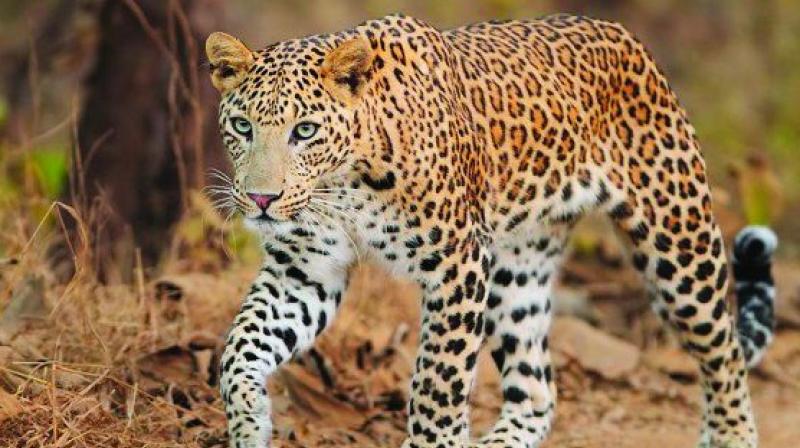Indian leopards more endangered than ever

Hyderabad: Around 218 leopards have died in just the first four months of 2019 — a significant growth compared to the 500 leopard deaths noted through 2018. According to the data released by the Wildlife Protection Society of India (WPSI), rail and road accidents account for a majority 16-35 per cent of all leopard deaths.
The key factors behind leopard deaths have been identified as accidental electrocution, forest department shootings, village lynchings, death during rescue/treatment, infighting, rail and road accidents, and poaching.
Wildlife conservation organisation WPSI stated, “A dramatic rise (40 per cent) in the number of leopard deaths in India has been noted in just the first four months of 2019. A majority of these incidents have been registered in Uttarakhand, Maharashtra, Rajasthan, Madhya Pradesh, and Karnataka.” No significant deaths were reported in Telangana state and Andhra Pradesh.
Dr Krishnendu Mondal, a scientist from the Ministry of Environment, Forest and Climate, said, “Leopards possess a unique ability to survive any terrain, climate, and type of forest, which ironically also turns out counterproductive for their survival. A significant number of leopard deaths have been reported in areas where you otherwise would not expect big cats to show up, for example, tea gardens in West Bengal or even the sugarcane fields in Maharashtra. While a small patch of forest can suffice for a leopard to survive, humans have quite mercilessly been encroaching their territory, thereby giving rise to conflict.”
Independent data agency IndiaSpend says, “After poaching, rail and road accidents have been found to cause a majority of the leopard deaths in India. With increasing infrastructure encroachments in leopard habitats, deaths by rail/road accidents have risen steadily — from 41 in 2014 to 51 in 2015, 51 in 2016, 63 in 2017, all the way to 80 in 2018. Electrocution happens to fall next in line behind the rising number of leopard deaths in India, as most Indians are now connected to the power grid.”
Corroborating the aforestated claims, the World Wildlife Fund (WWF) said, “Human-animal conflict, caused primarily by habitat encroachment, is responsible for the most amount of leopard deaths in rural India after poaching, which is done to facilitate the illegal trade of leopards’ body parts, which are then used in the manufacture of medicines and cosmetics.”
“It’s very unlikely for the trend to reverse. Humans are fairly intelligent and can find a way to co-exist with leopards, but that looks like a long shot. Secondly, I have seen that leopards can survive on rodents, but easy prey like cattle, for example, lure them into human settlements, thereby increasing the likelihood of them being hunted,” Dr Krishnendu added.
The International Union for Conservation of Nature (IUCN) has mentioned the Indian leopard in the “vulnerable” category in its Red List. Leopards are protected animals, listed in Schedule I of the Wildlife (Protection) Act, 1972, and hunting or causing harm to them amounts to disciplinary and well as monetary punishment. Mr Imran Siddiqui of the Hyderabad Tiger Conservation Society said, “The media, including netizens on social media, have been sensationalising leopard sightings, thereby inciting lynchings. Rajasthan, however, has adopted a holistic approach towards protecting leopards with its Project Leopard. Similar projects should be initiated across the country.”

